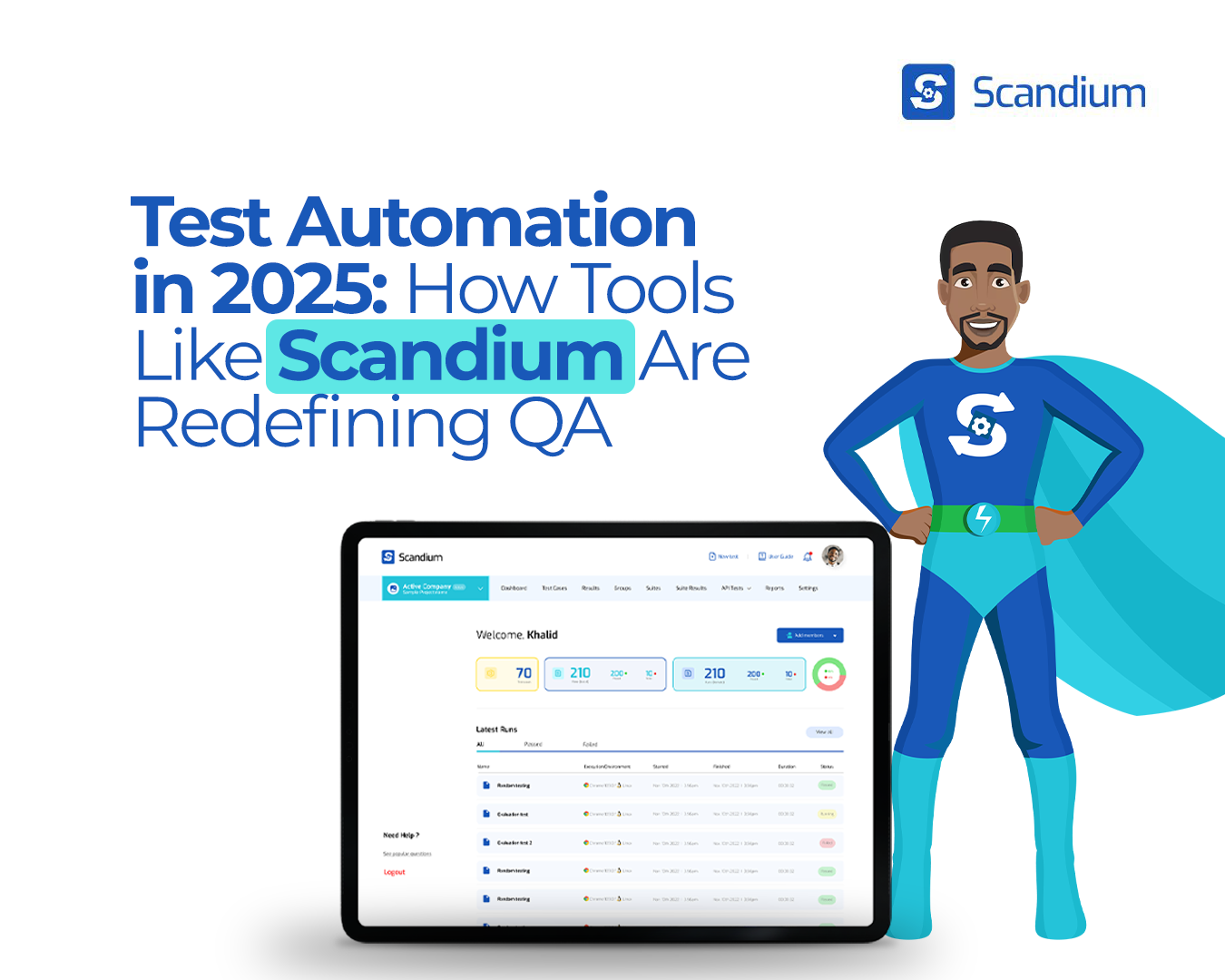
Quality assurance (QA) has always been essential to delivering great software. But in 2025, it’s no longer just about catching bugs, it’s about shipping confidently, scaling faster, and building trust across teams. As software development gets faster and more complex, the tools we use for testing have had to evolve too.
Welcome to the era of AI-powered, no-code testing.
And leading the charge? Tools like Scandium, purposely built to empower QA teams, developers, and product stakeholders to do more without the heavy lifting of traditional test automation.
The State of Test Automation in 2025
Today, testing is no longer a siloed QA activity. It’s an integrated, continuous part of software development lifecycles. Agile, DevOps, CI/CD, all these methodologies demand that testing keep pace with development.
However, traditional automation approaches often struggle to keep up. They require technical expertise, are prone to flakiness, and break when the UI shifts. This slows teams down and discourages widespread adoption.
That’s where the next generation of tools comes in and why Scandium is built differently.
What’s Changing? And Why It Matters
Here’s how tools like Scandium are redefining how teams approach test automation:
1. No-Code, But Powerful
Not everyone who needs to test software writes code. Scandium lets QA engineers, product managers, and even business analysts automate tests without touching a single line of code. With its intuitive interface and AI-assisted scenario recording, anyone can create, run, and manage tests with confidence.
2. AI That Does More Than Buzzwords
Scandium doesn’t just use AI for the sake of it. It:
- Auto-diagnoses test failures with contextual suggestions
- Repairs broken tests with self-healing capabilities
- Predicts flaky or unstable tests before they break
- Generates test scenarios from your interactions
This means fewer false positives, faster debugging, and more robust test coverage.
3. Unified Testing Across Web, Mobile, and API
Many QA teams still juggle multiple tools for different platforms. Scandium brings them all together, test your web apps, mobile apps, and APIs with one engine and a unified workflow.
4. Built for Collaboration
Testing is a team sport. Scandium is built to support collaboration across QA, devs, and product teams. Features like test suite organization, cloud test runs, team workspaces, and intelligent reporting help break silos and boost transparency.
5. CI/CD Friendly by Design
In 2025, if your test tool doesn’t plug into your pipeline, it’s already outdated. Scandium integrates seamlessly with popular CI/CD platforms like GitHub Actions, GitLab, CircleCI, Jenkins, and more, with real-time execution logs and smart failure handling baked in.
The Broader Impact: From QA Bottleneck to Quality Enabler
Test automation is no longer just about speed, it’s about confidence.
Tools like Scandium help teams:
- Catch bugs earlier in the development cycle
- Reduce reliance on overburdened automation engineers
- Empower manual testers to scale their impact
- Align QA strategy with product velocity
The result? Better software, faster.
Looking Ahead
As AI continues to mature and no-code approaches become the norm, test automation will only get smarter and more inclusive. Scandium is committed to staying at the forefront, not just by keeping up, but by pushing the boundaries of what’s possible in testing.
In a world where software quality can’t be compromised, Scandium helps teams meet the moment.
Ready to see how Scandium test automation actually works for you? Book a demo with Scandium today.
